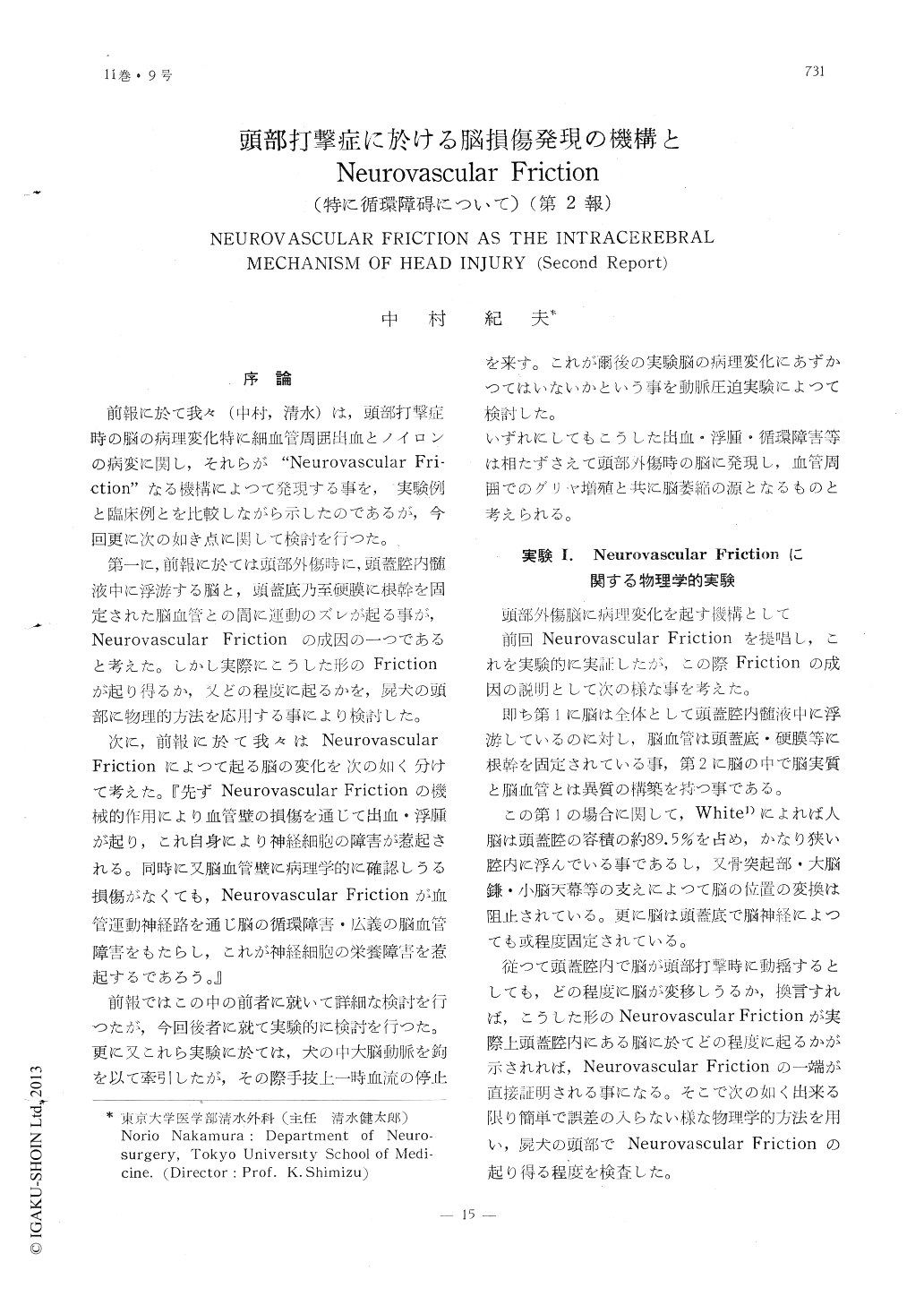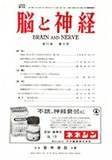Japanese
English
- 有料閲覧
- Abstract 文献概要
- 1ページ目 Look Inside
序論
前報に於て我々(中村,清水)は,頭部打撃症時の脳の病理変化特に細血管周囲出血とノイロンの病変に関し,それらが"Neurovascular Fri-ction"なる機構によつて発現する事を,実験例と臨床例とを比較しながら示したのであるが,今回更に次の如き点に関して検討を行つた。
第一に,前報に於ては頭部外傷時に,頭蓋腔内髄液中に浮游する脳と,頭蓋底乃至硬膜に根幹を固定された脳血管との間に運動のズレが起る事が,Neurovascular Frictionの成因の一つであると考えた。しかし実際にこうした形のFrictionが起り得るか,又どの程度に起るかを,屍犬の頭部に物理的方法を応用する事により検討した。
In the previous report, the author and Professor K. Shimizu advocated the neuro-vascular friction as the mechanism that leads to various pathological changes in the brain of the head injury.
In this report, the next three points were studied.
1. The neurovascular friction may ensue on the following basis: the cerebral blood vessels are fixed at the base of the skull or to dural sini, whereas the brain is floating in the cerebro-spinal fluid in the skull.
The author used the heads of cadaveric dogs. A small mirror with two legs was fixed on the brain. One of the legs of the mirror was inserted into the middle cerebral artery and the other into the brain paren-chyma. The turn of the mirror was measur-ed optically by pushing the brain tomards the side away from the mirror.
The above friction could not be veiified directly from these experiments, but the tendency of such strain could be shown be-tween the artery and the parenchyma.
2. The neuro-vascular friction may cause the disturbance of the cerebral blood flow and consequently intra-cranial damages may become worse as a result of a blow or an injury.

Copyright © 1959, Igaku-Shoin Ltd. All rights reserved.


